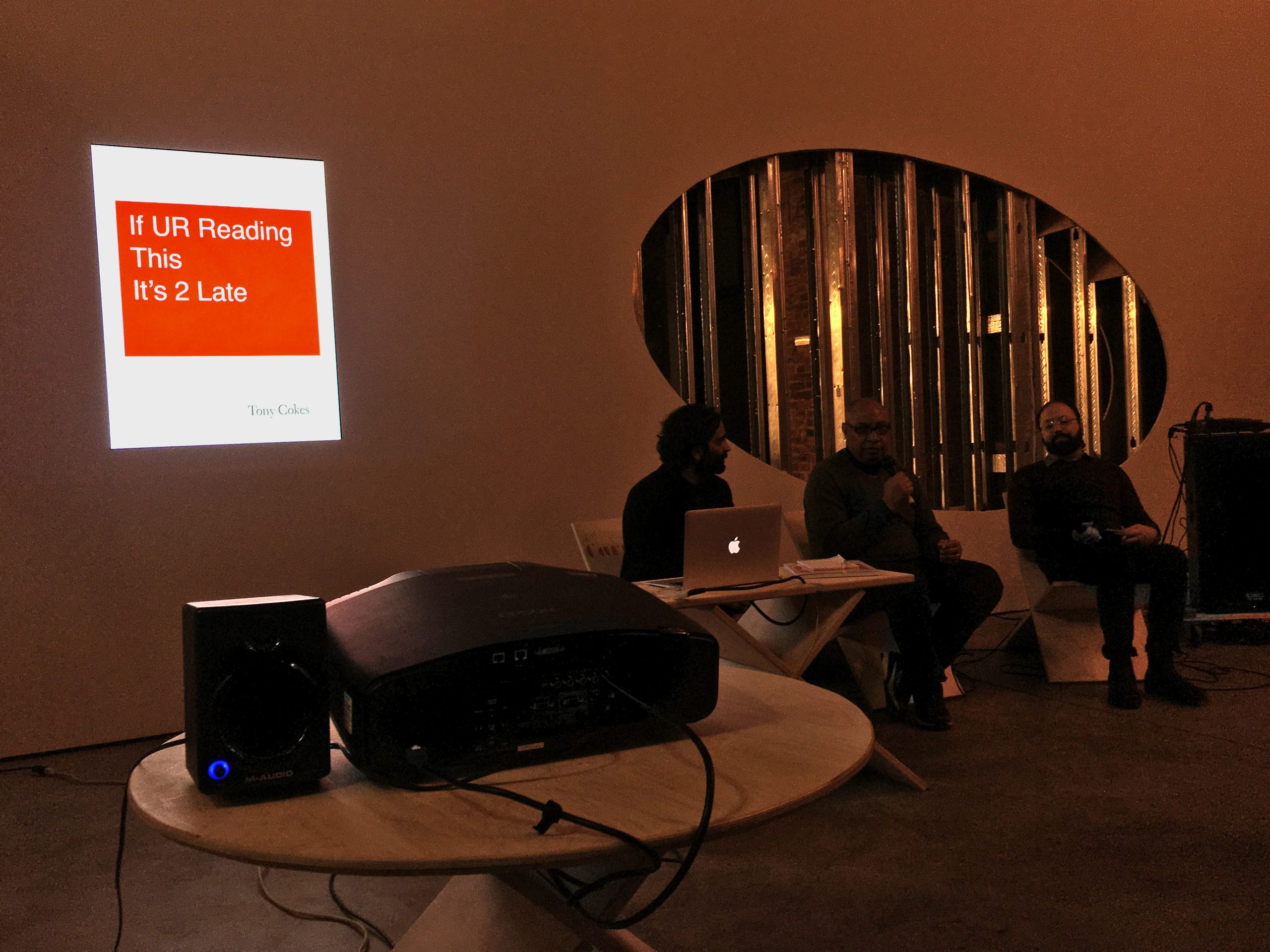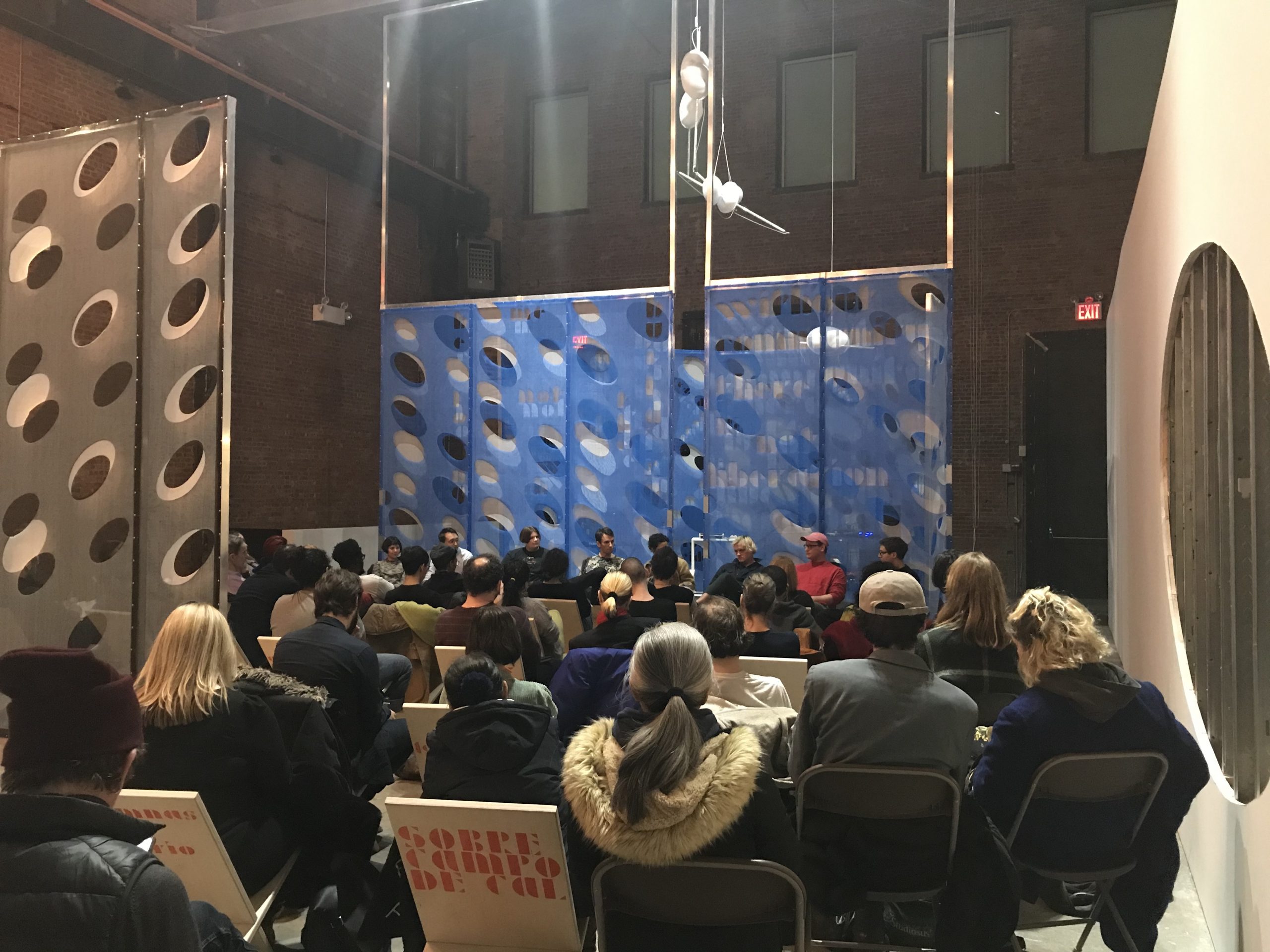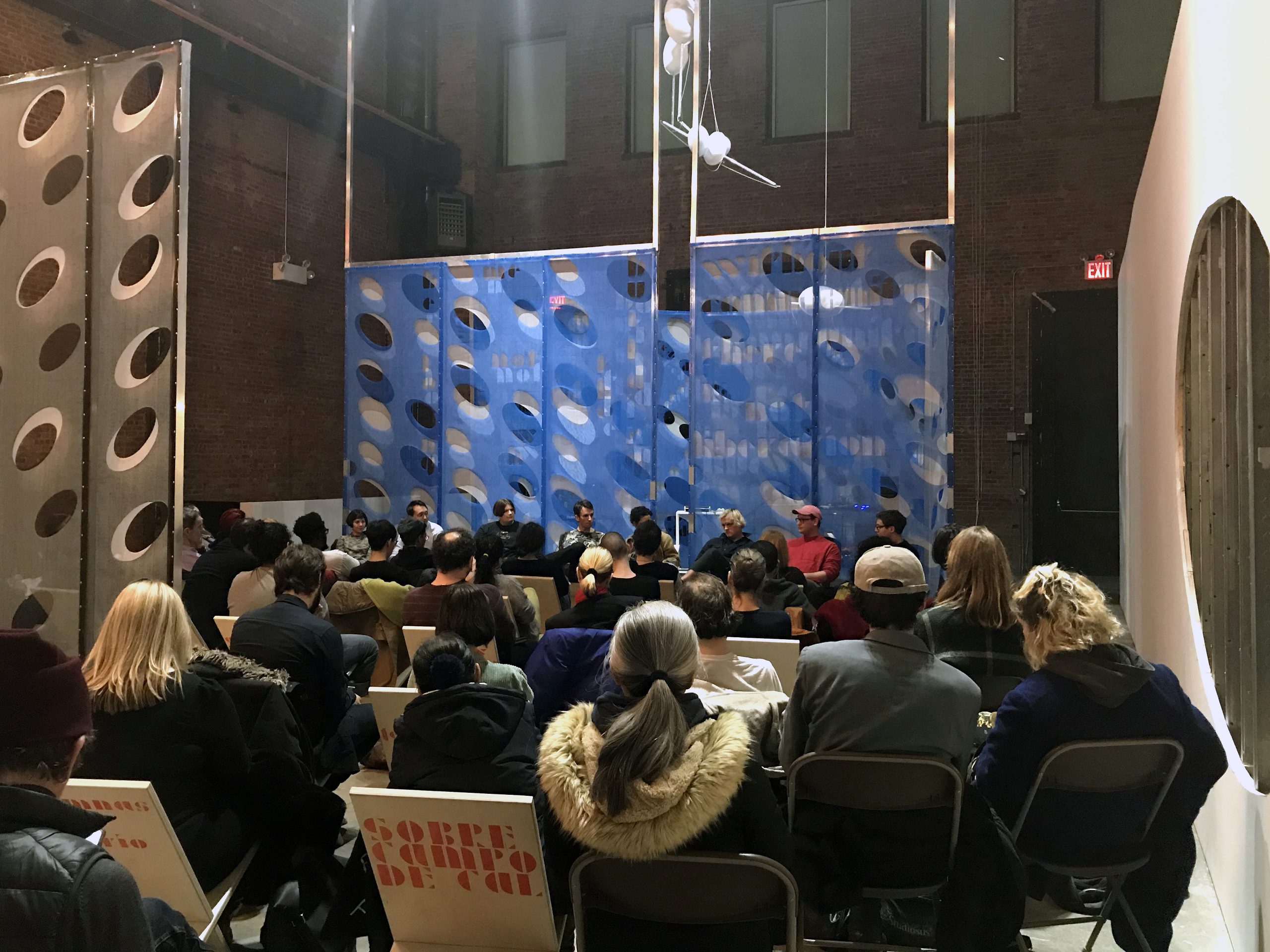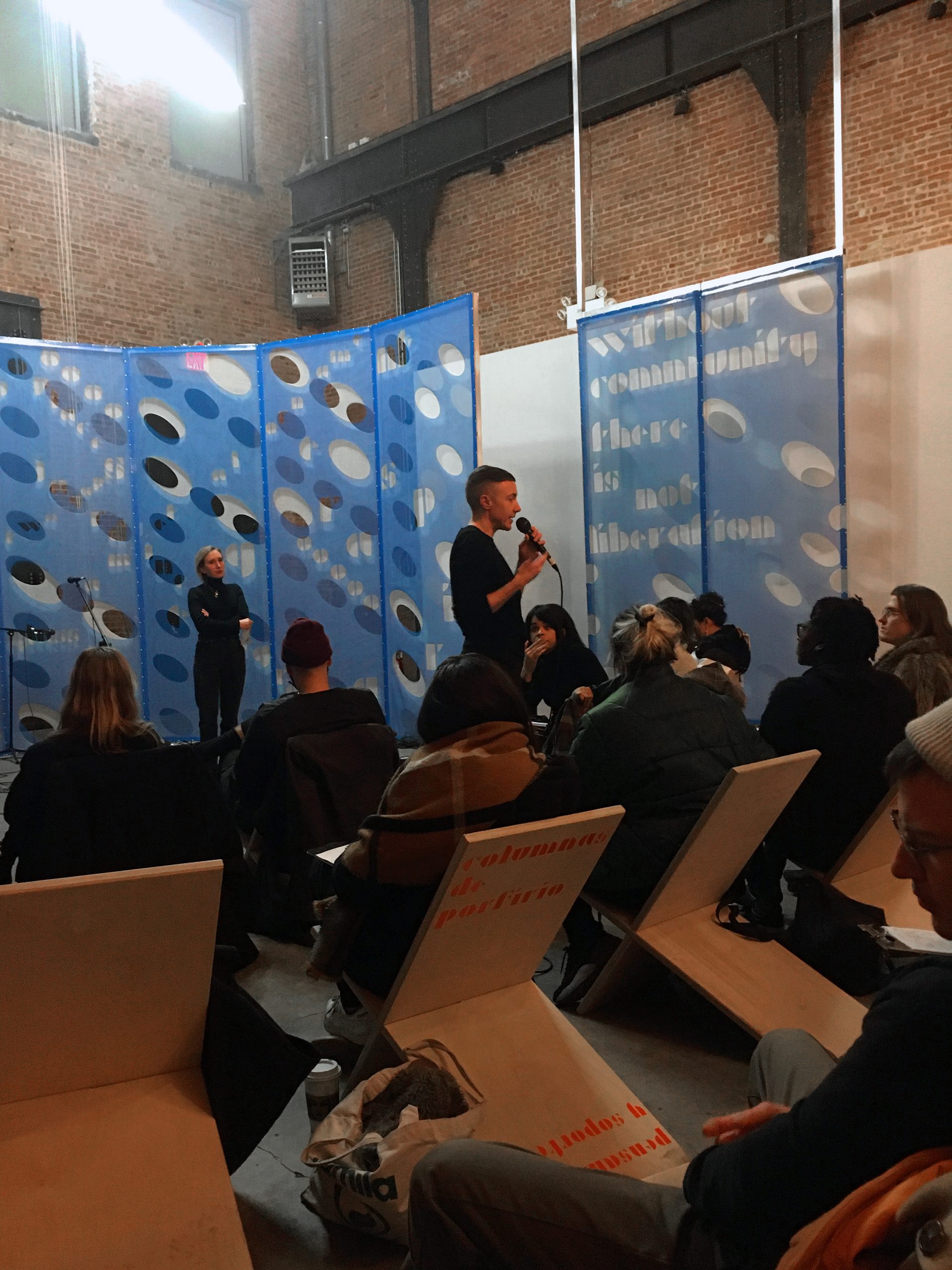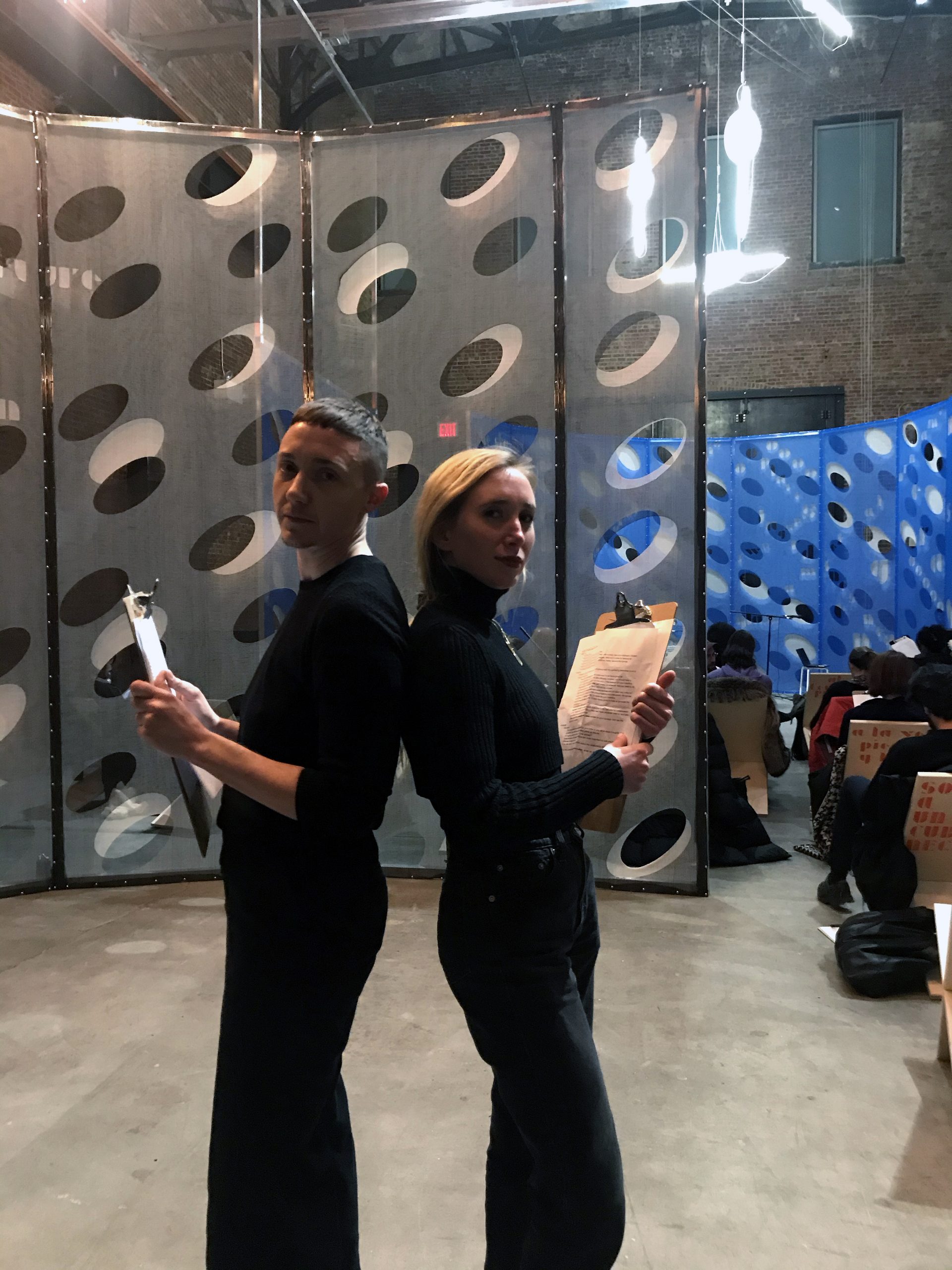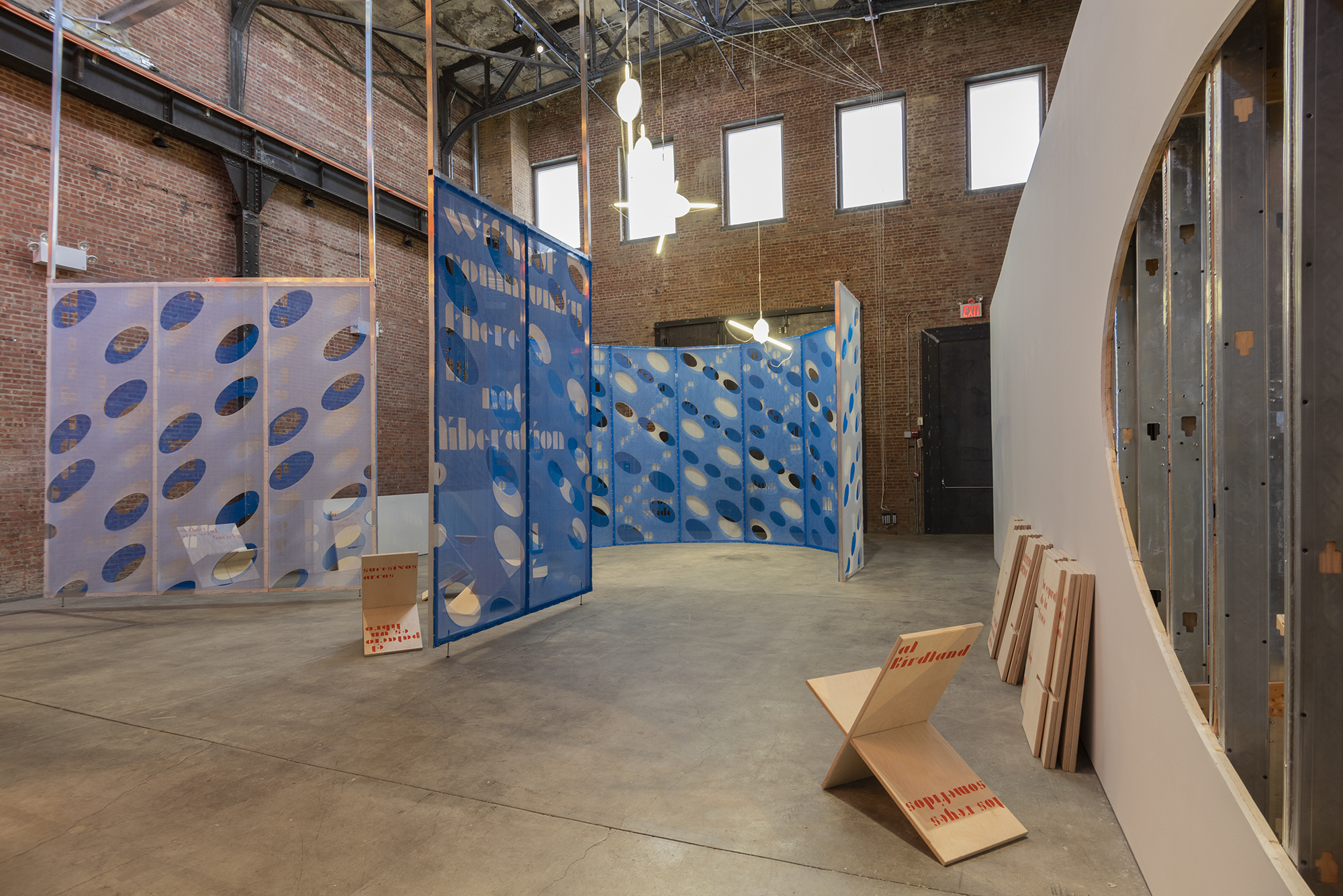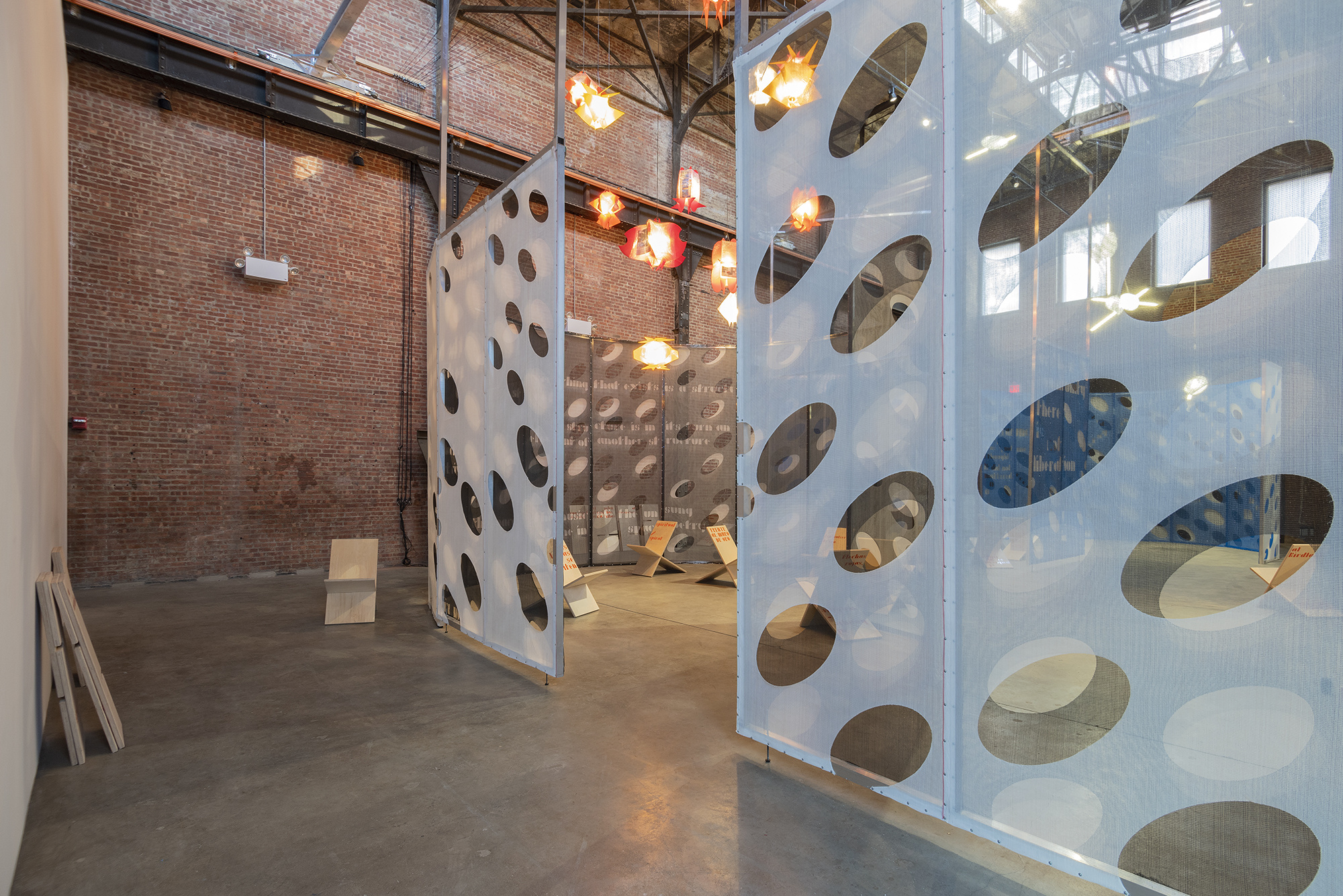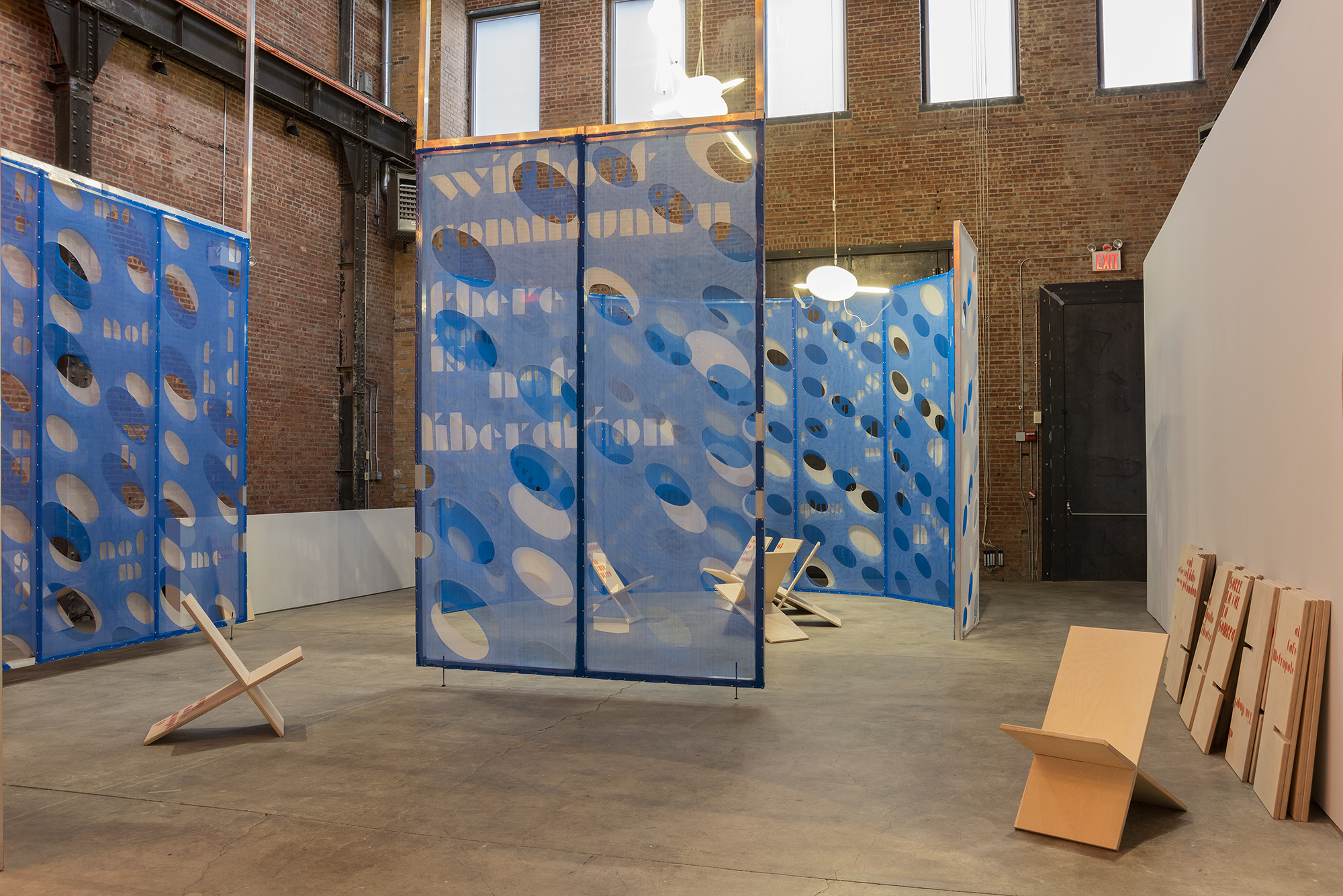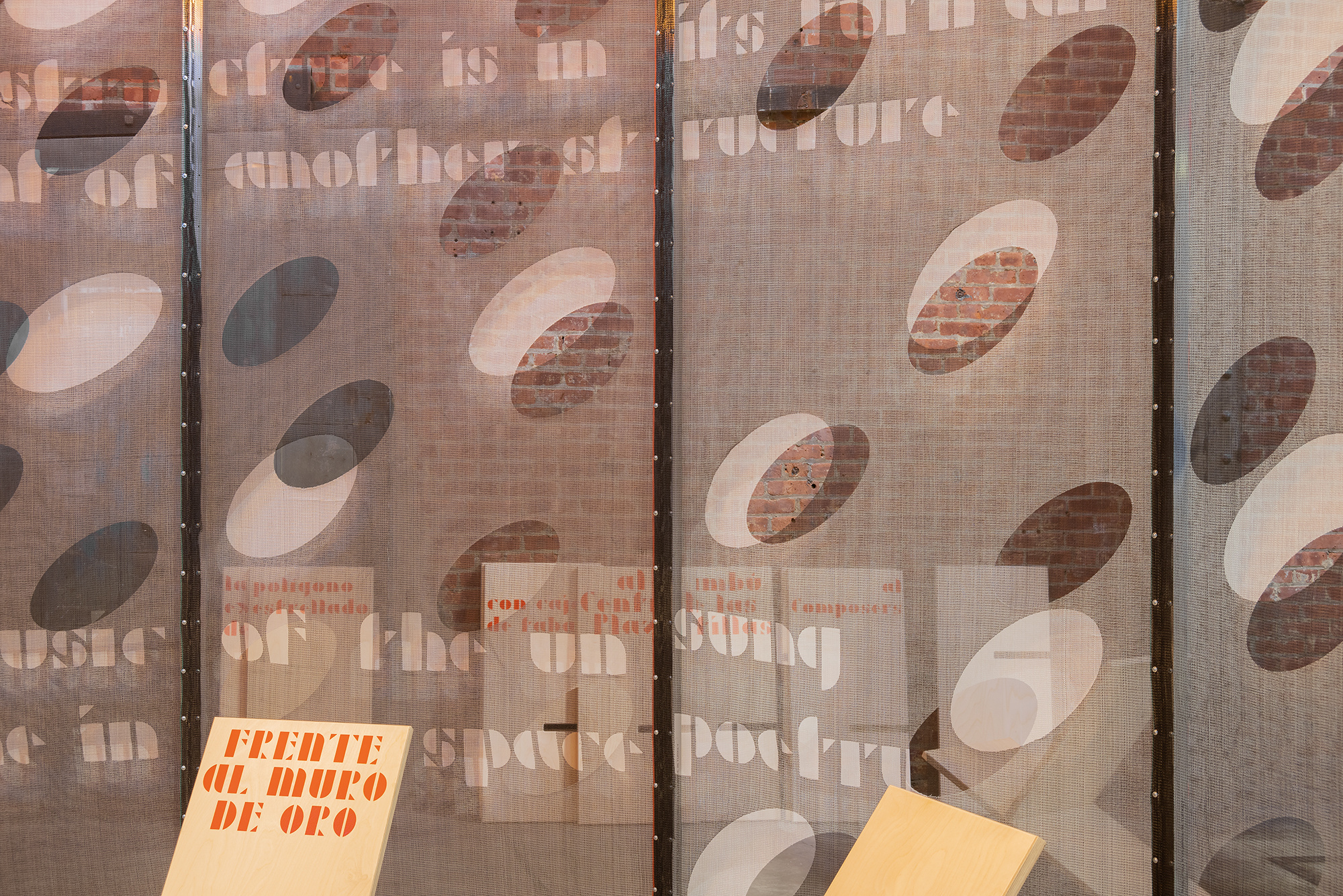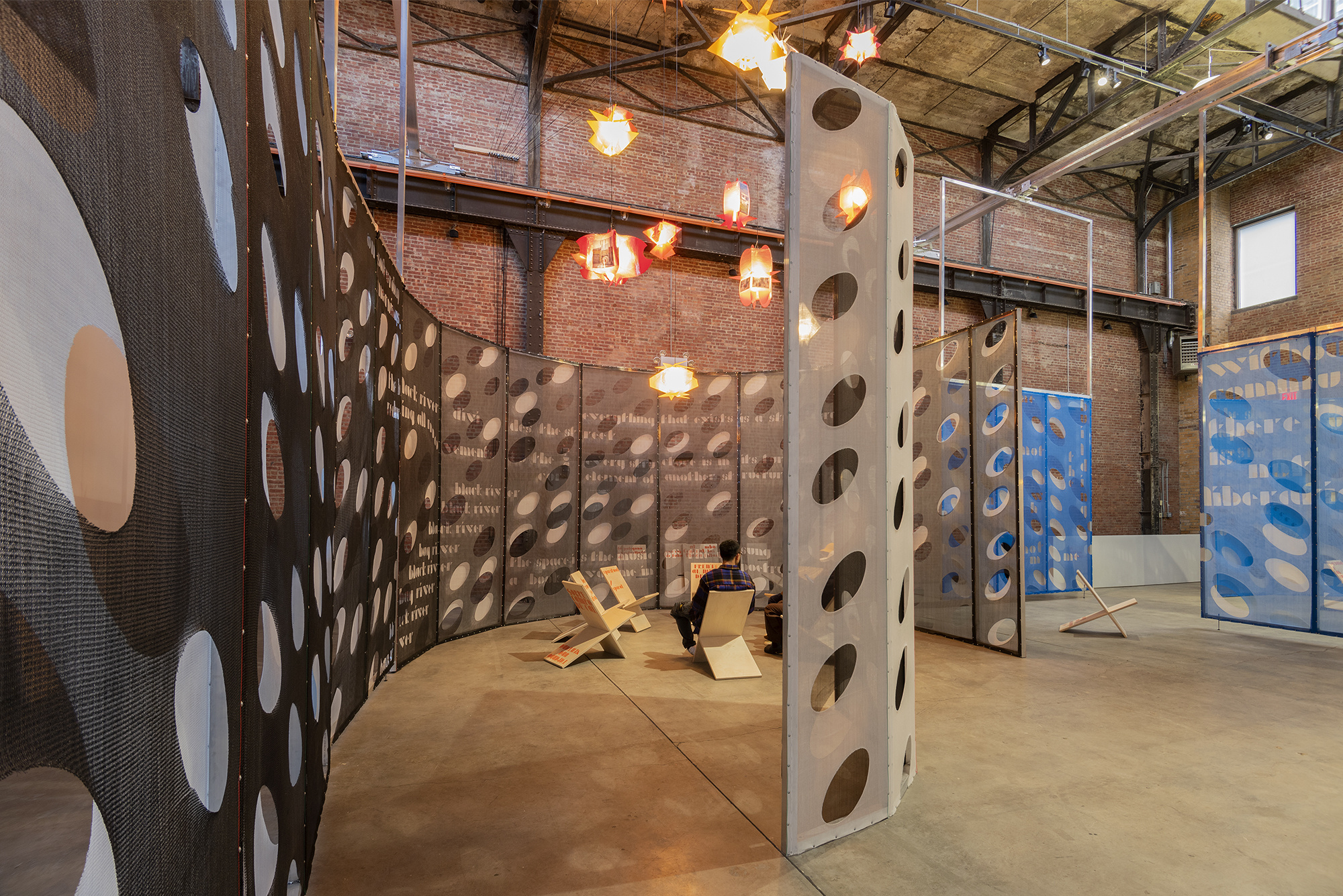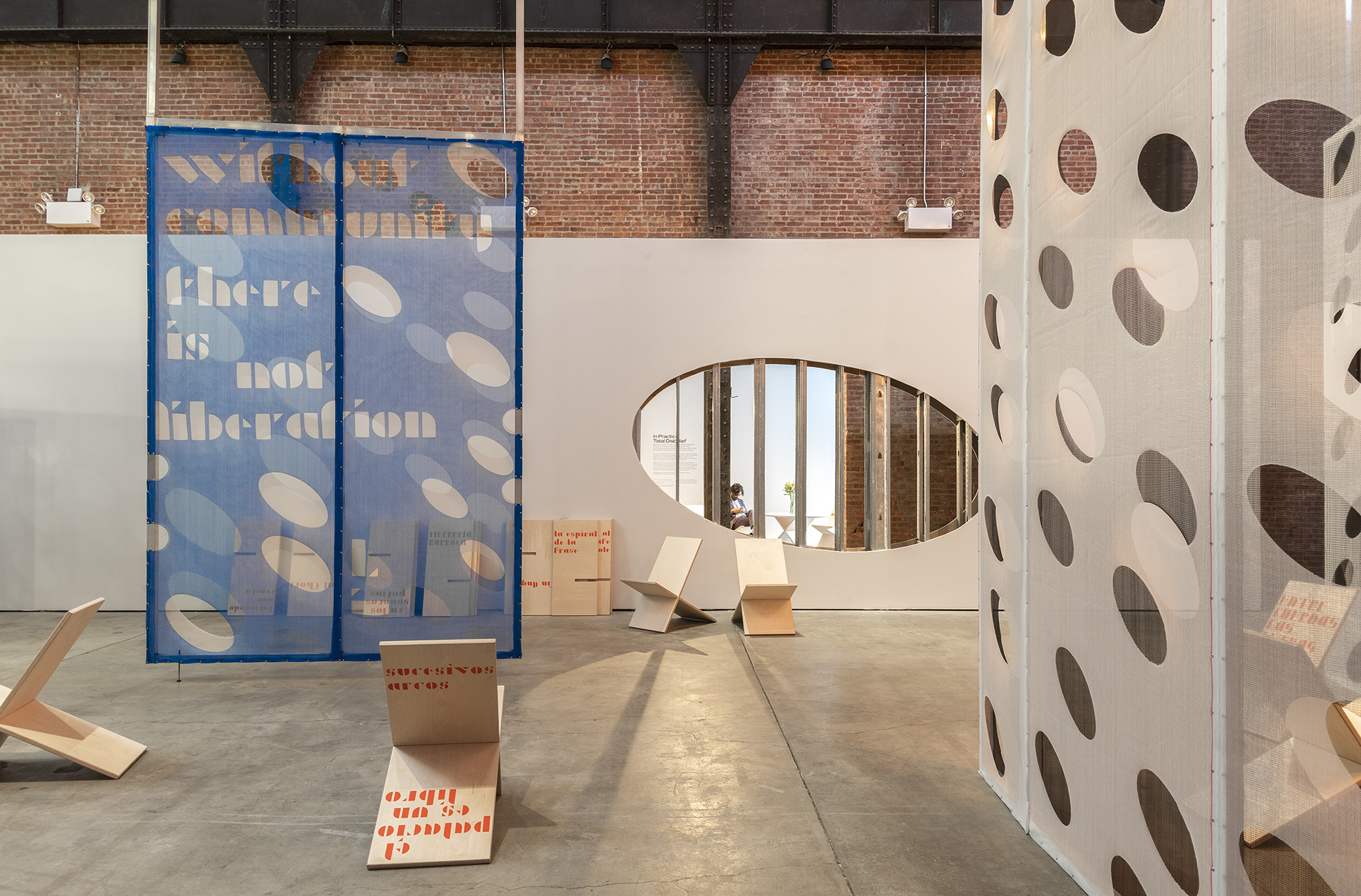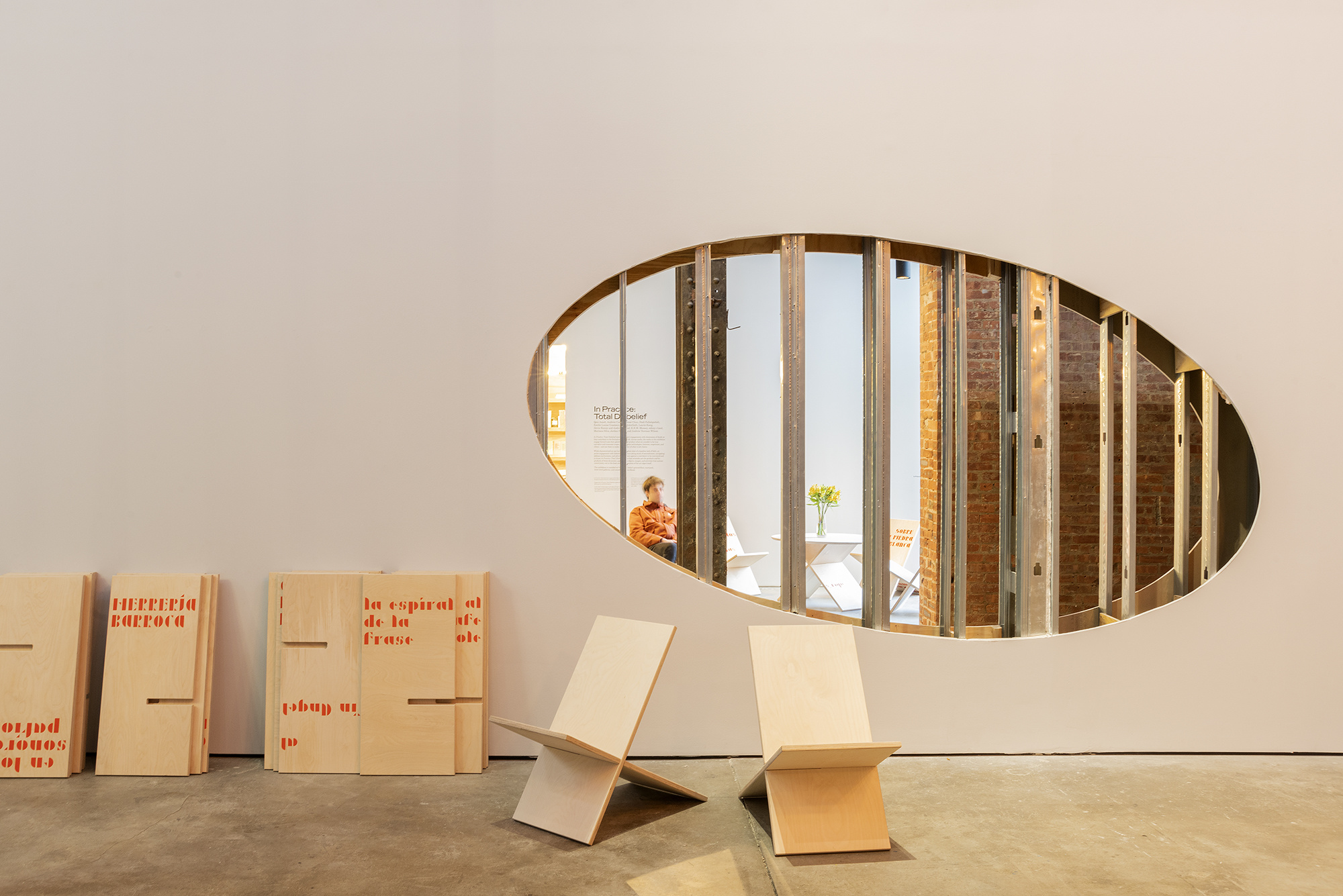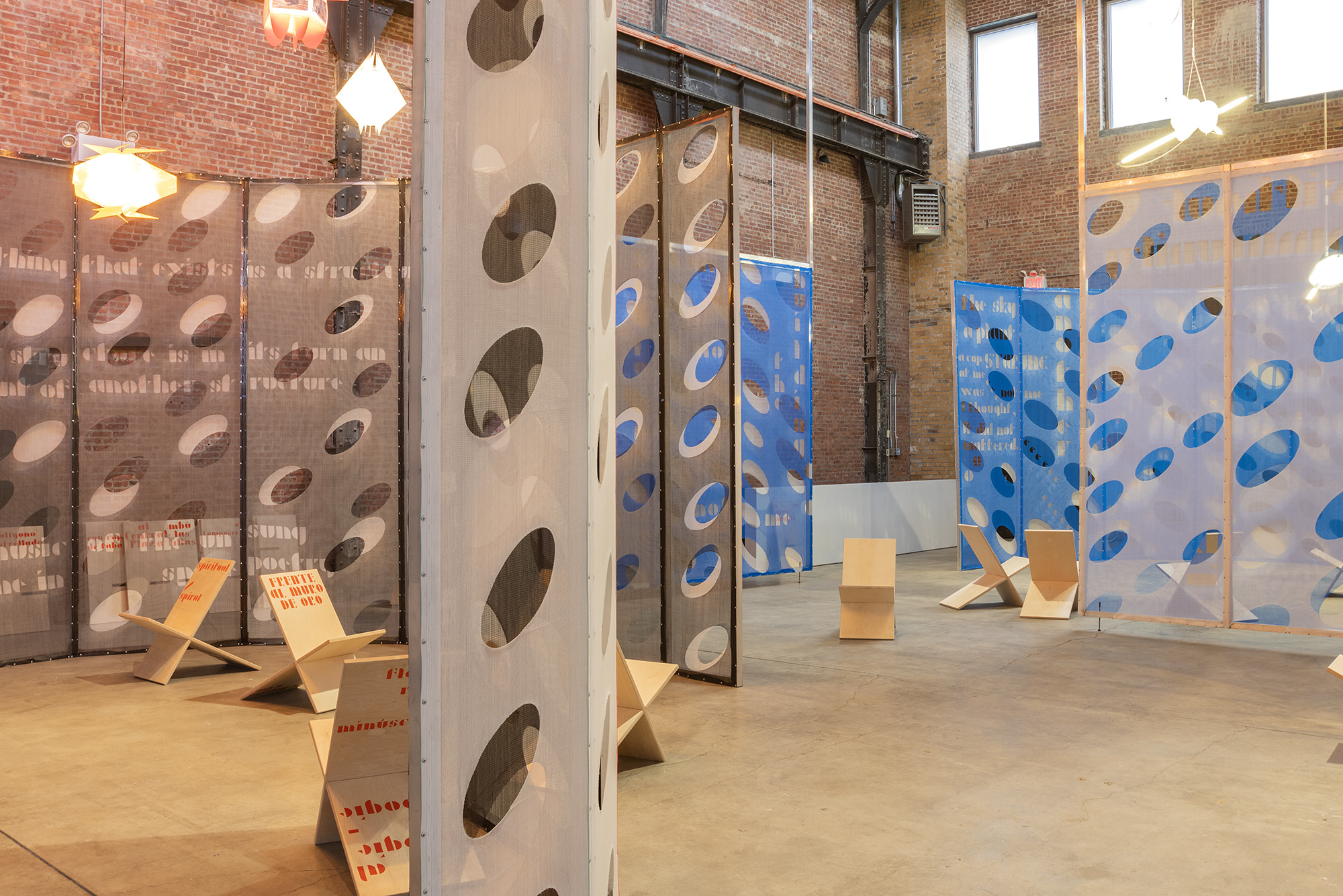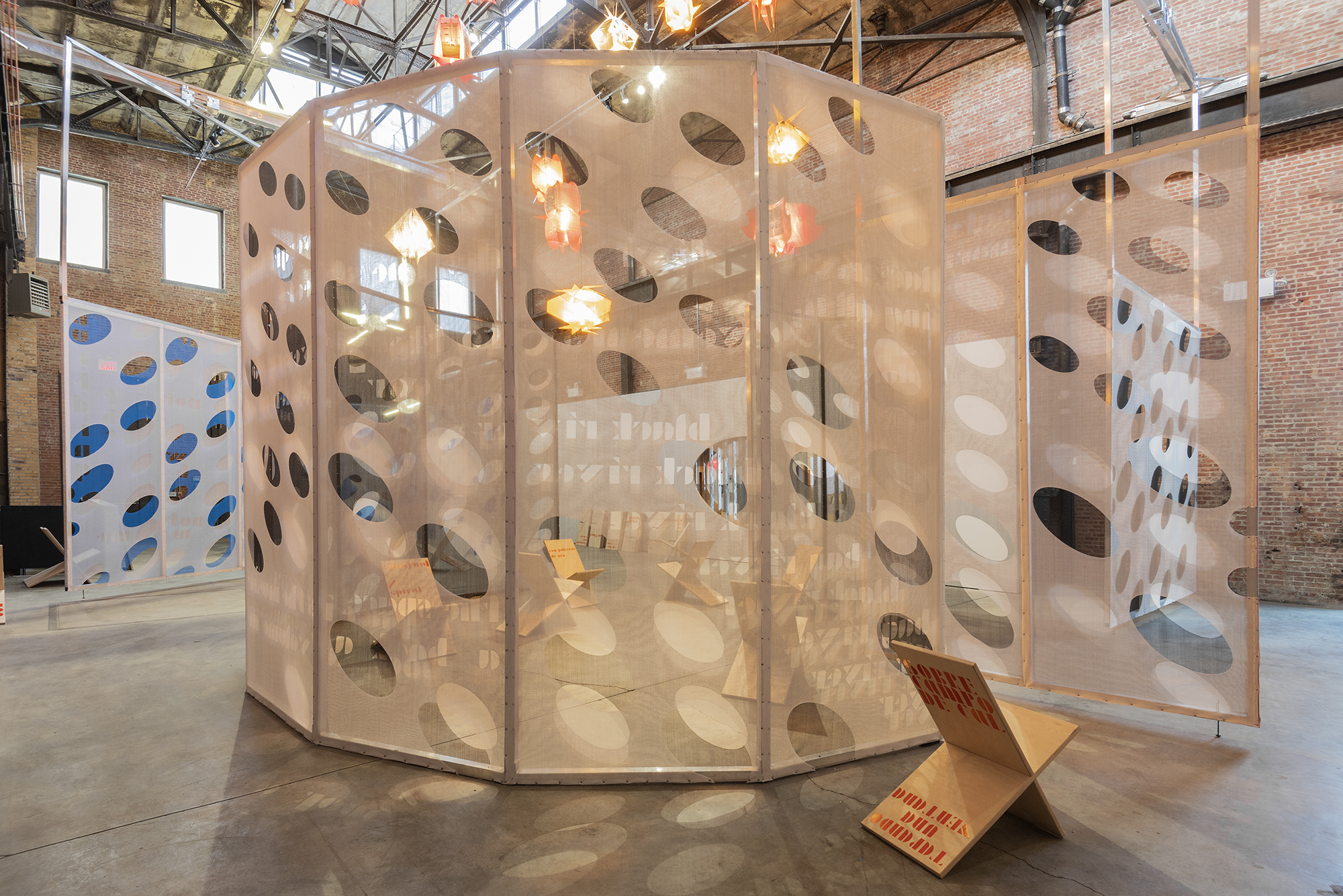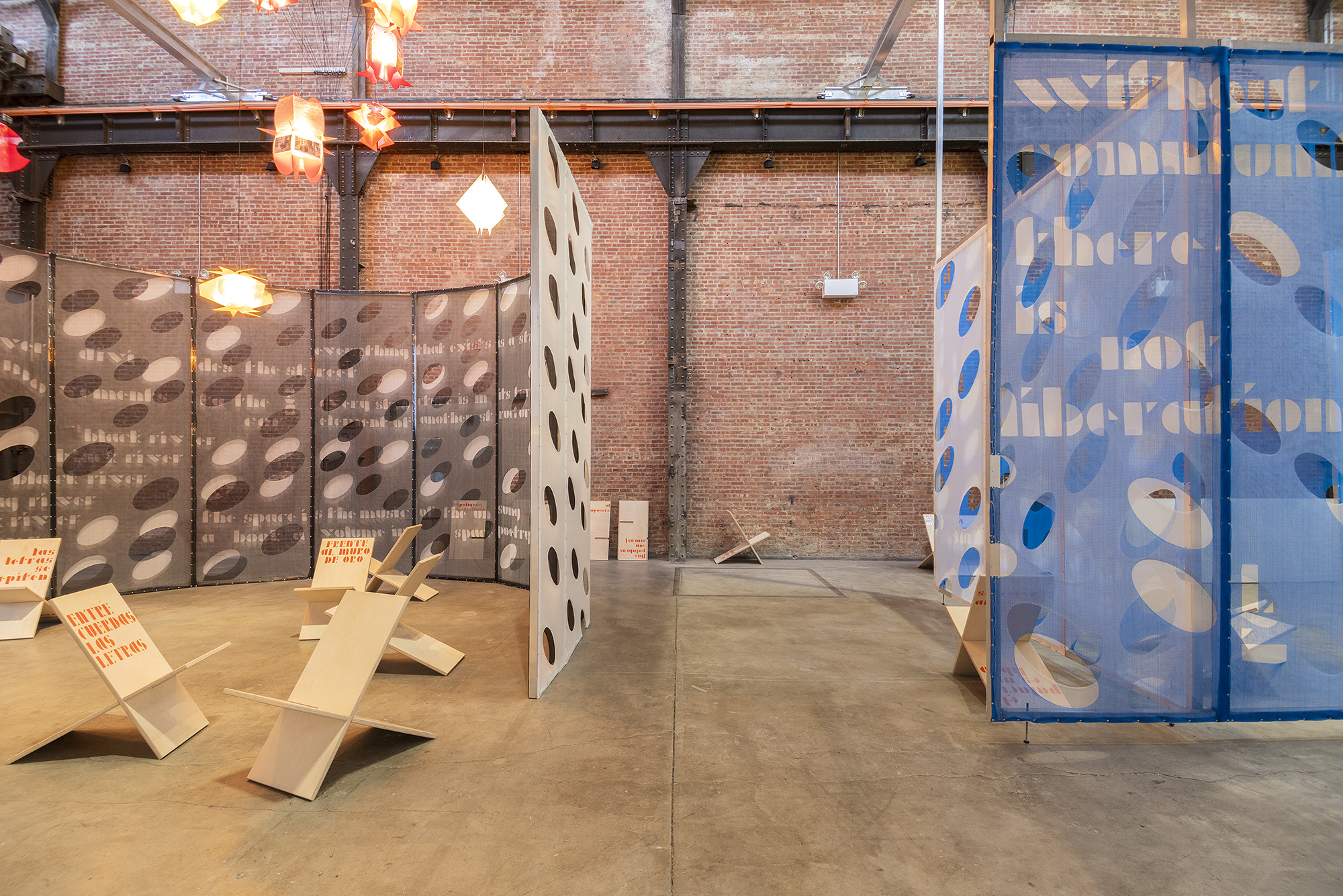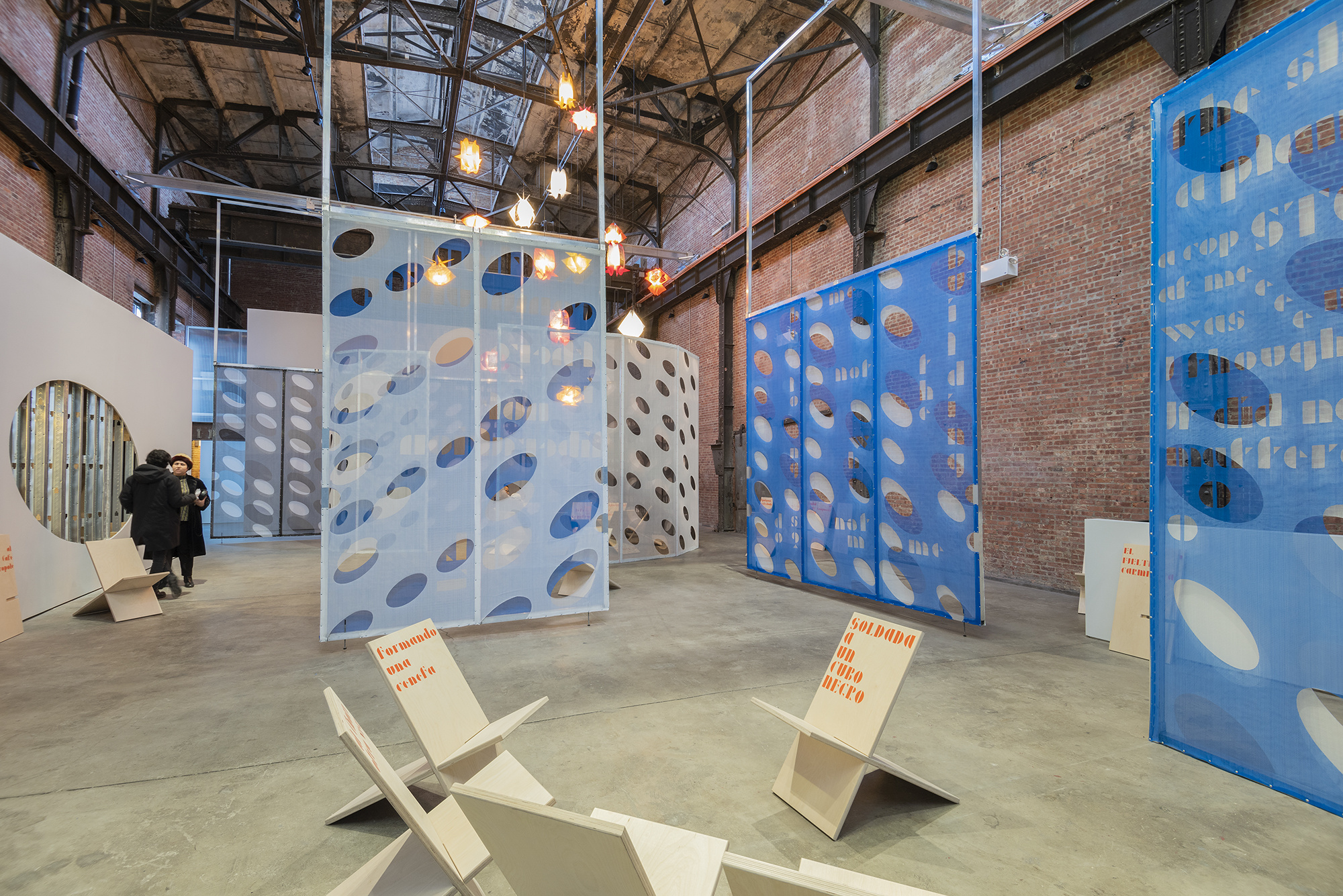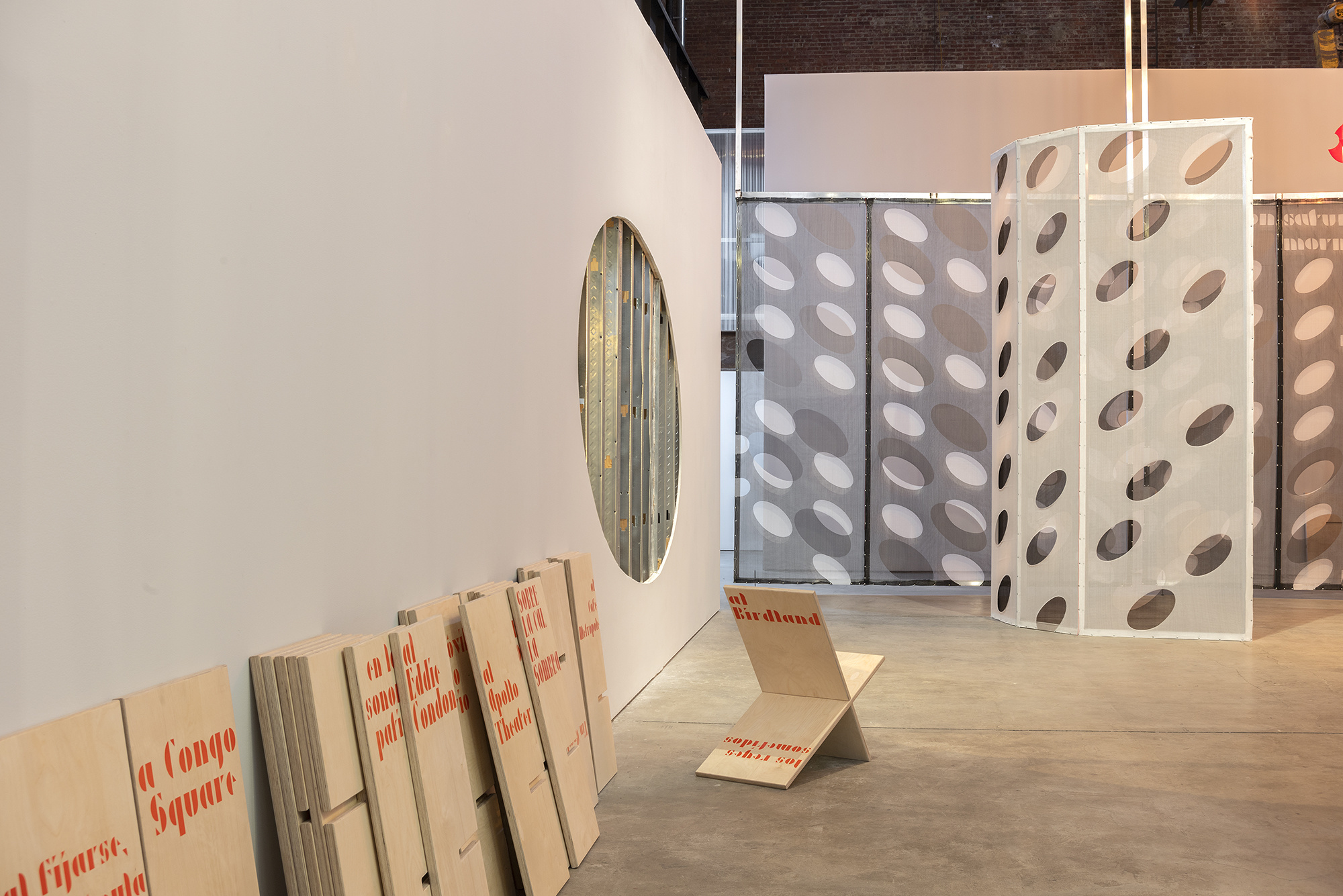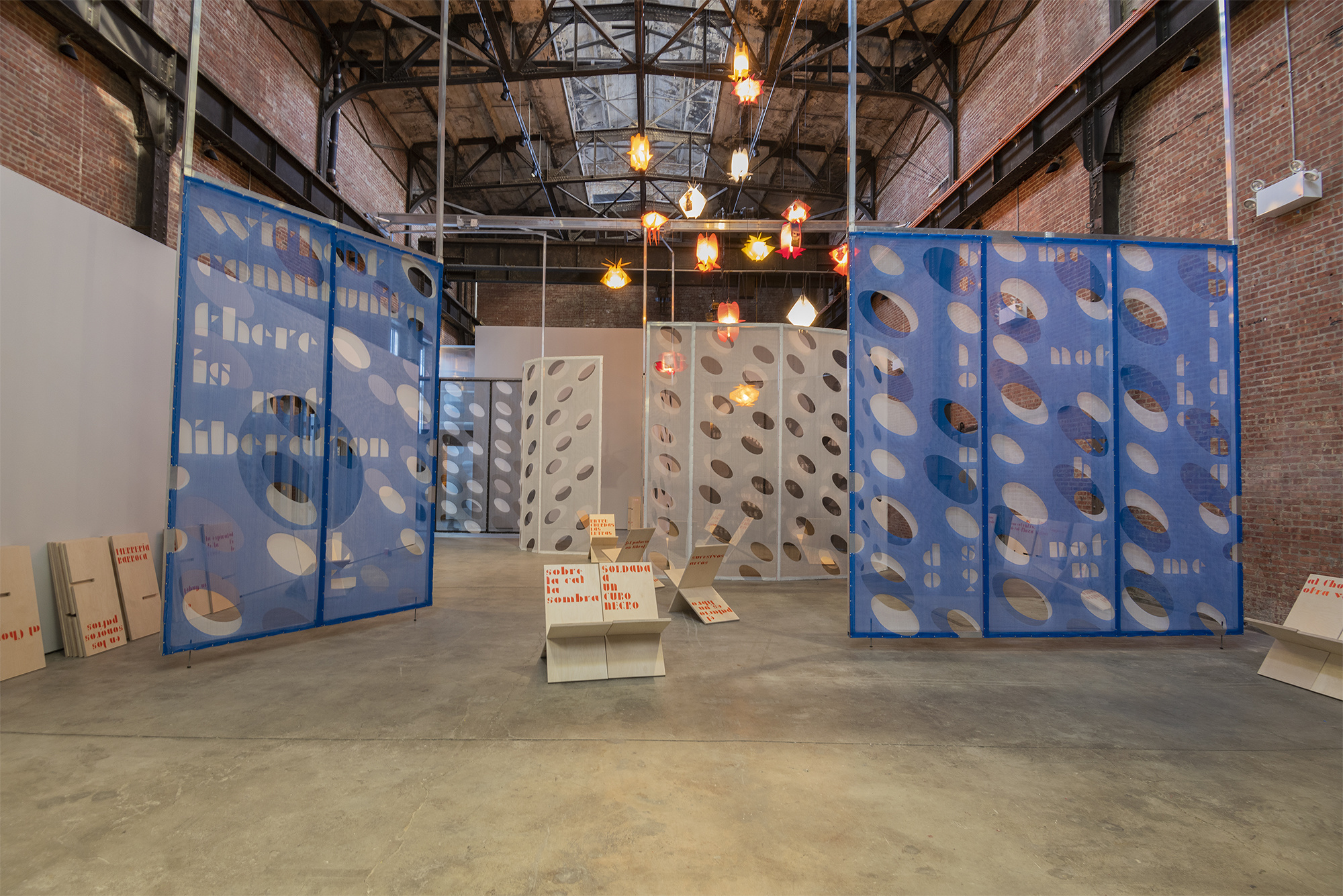https://www.sculpture-center.org/exhibitions/12599/model-to-exhaust-this-place-sculpturecenter-pavilion
Model to exhaust this place (SculptureCenter Pavilion)
Curated by Sohrab Mohebbi
For his new commission at SculptureCenter, Rafael Domenech creates a large-scale modular installation in the ground floor gallery. Responding to the conditions of the exhibition space as a former trolley repair shop, Domenech uses the building’s existing structure, in particular the tracks of an industrial gantry system, as a machine to produce and facilitate the work. Working with materials typically destined for construction sites, the work engages with the urban vernacular of the rapidly growing neighborhood of Long Island City.
Depending on the time and purpose of encounter with Domenech’s exhibition, the installation functions simultaneously at multiple levels: as a sculpture, a decentered architectural model, a pavilion, and a venue for public programs and gatherings. As such, the work acknowledges the varied possibilities and promises of contemporary art institutions. By installing large panels made of aluminum framed construction mesh the artist creates what he calls “space modulators” that create multiple architectural configurations.
Domenech considers the book as a standardized unit, organizational mechanism and an architectural device. This is further articulated by the artist’s research in concrete poetry as a strategy to suggest different ways of handling and approaching a book according to the direction and the distribution of sentences on the page. In this instance, in addition to writings by the artist, the installation distributes two poems by exiled Neo-Baroque Cuban poet, novelist, essayist, and critic Severo Sarduy (1937-1993) that concretize a poetics of dislocation. In addition, the installation includes elements from Domenech’s work previously installed in the SculptureCenter exhibition Searching the Sky for Rain, as well as parts from Las Palabras son Muros [Pavilion for Astoria], his recent outdoor pavilion at Socrates Sculpture Park in Long Island City. Addressing an economy of means in his production, the artist shows how artwork exists in the ecology of a practice at the intersection of studio, institution, and urban space.







